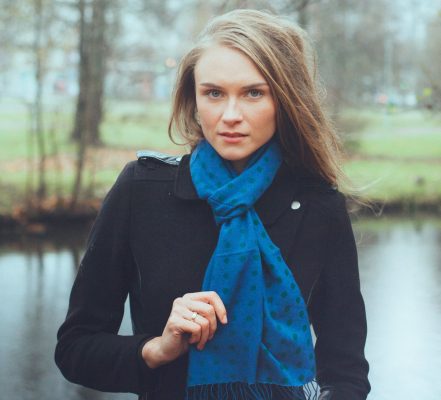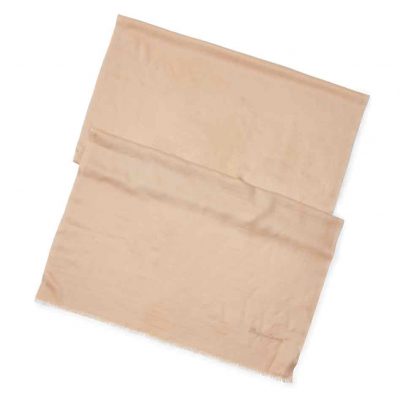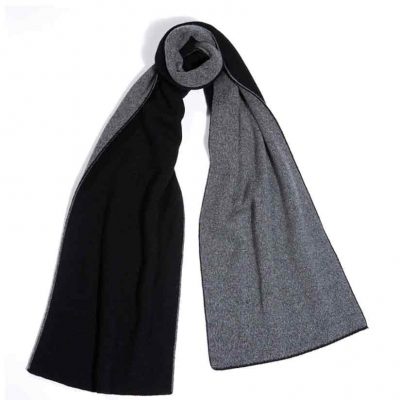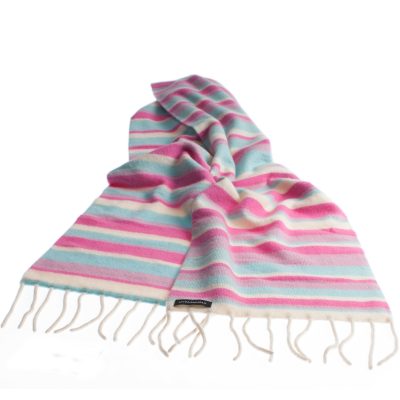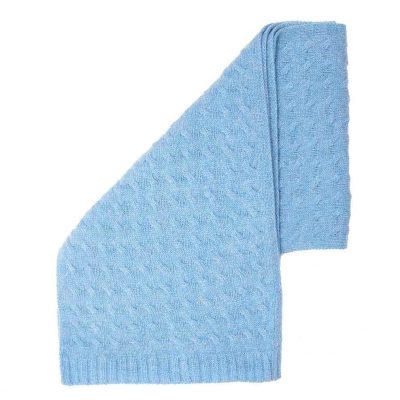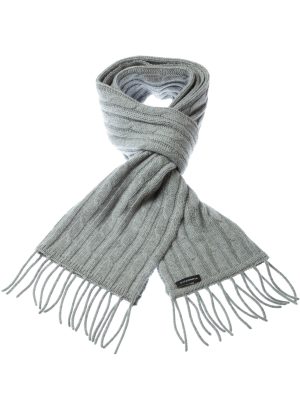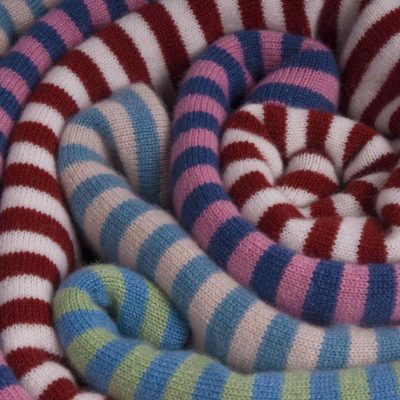| - [Narrator] Cashmere is one of the most |
| sought-after fibers in the world. |
| Its fine hairs are softer, lighter |
| and can be up to three times more insulating |
| than sheep wool. |
| It's been a prized material for centuries, |
| but its quality comes at a cost, |
| and a luxury cashmere jumper could cost you |
| well over $500. |
| So why is it so expensive? |
| Cashmere doesn't come from a sheep |
| like you might think, but from the cashmere goat. |
| These goats are found across the Himalayas |
| where temperatures can drop to minus 30 degrees, |
| and their freezing cold habitat |
| means they grow an incredibly thick, warm coat. |
| It's not the outer hair you can see |
| that's used for making garments, |
| but the super soft coat just underneath it. |
| Johnstons of Elgin has been making cashmere |
| products since 1851, and to do that, |
| they need a lot of goats. |
| - We are using the cashmere from about 1.2 million goats, |
| and those goats are spread right over Outer Mongolia, |
| China, a little bit in Afghanistan as well. |
| - [Narrator] There's a reason so many goats are needed. |
| While a sheep can produce at least three kilos |
| of wool each year, a cashmere goat |
| will only give you around 200 grams. |
| - So basically, this much cashmere from every goat. |
| For a scarf, we could be working with |
| the production of a single goat, |
| but for a jumper, for example, |
| you could be working with five, eight, |
| 10 goats' worth of cashmere. |
| - [Narrator] Because of the tiny amount each goat produces, |
| the supply is severely limited, |
| and the fibers can only be collected once a year. |
| While sheep are sheared for their wool, |
| cashmere goats are usually brushed |
| to remove the soft hairs that molt in the spring. |
| Even when you've harvested the fibers, |
| the usable weight halves once it's been stripped |
| of grease, dirt, and thicker hairs. |
| And despite its popularity, |
| cashmere still only makes up 0.5% |
| of the world's total wool production. |
| Once you have the pure cashmere, |
| processing it takes a lot of work. |
| The fibers are first dyed to the right color |
| and aerated to stop them clumping together. |
| Cashmere softness means that it needs to be treated |
| delicately throughout the whole process. |
| Any chemicals or overprocessing will damage the fibers. |
| The fibers are then carded, |
| a process that detangles and lines up the hairs |
| in thin sheets so that they can be spun into a yarn. |
| The quality of cashmere is graded on its fineness |
| and its length, and a high-quality individual |
| cashmere hair can be as thin as 14 micrometers. |
| When it's finally ready, this dyed and spun yarn |
| can then be used to make everything |
| from jumpers to scarves. |
| - When you're making a cashmere scarf, |
| everybody thinks this is the most simple |
| product in the world. |
| And of course, when they come to the mill |
| and they see how it's actually done, |
| they realize actually there's a huge amount to it, |
| and there's an awful lot of hands and skilled work |
| that goes into making that possible. |
| So it is absolutely about the knowledge of the people, |
| about the skills of the people, |
| how you nurture this really delicate fiber |
| through the process. |
| - [Narrator] Cheaper cashmere products |
| have become hugely popular recently. |
| These claim to offer the quality of cashmere |
| for a lower price. |
| Some may use a slightly lower grade of cashmere |
| or different processing methods |
| to make the end result more affordable, |
| and while they are comparatively cheap, |
| they're still usually at least twice the price of wool. |
| There have been extreme cases of mislabeling, too, |
| and some supposedly 100% cashmere products |
| have been found to contain yak hair or even rat fur. |
| If you do find a really cheap product |
| that claims to be cashmere, |
| it may be too good to be true. |
| - There is nothing in the world like cashmere. |
| I mean, there are other precious fibers |
| or other fine fibers, but cashmere has great properties. |
| It's very strong. It is very warm. |
| It's very soft, and you can make from it |
| anything from a very thick, robust, |
| almost rug-like product through to |
| very fine, wispy, cloud-like, |
| very, very subtle pieces. |
| There are other precious fibers out there, |
| there are other fibers that are as fine, |
| but we can't do as much with them. |












